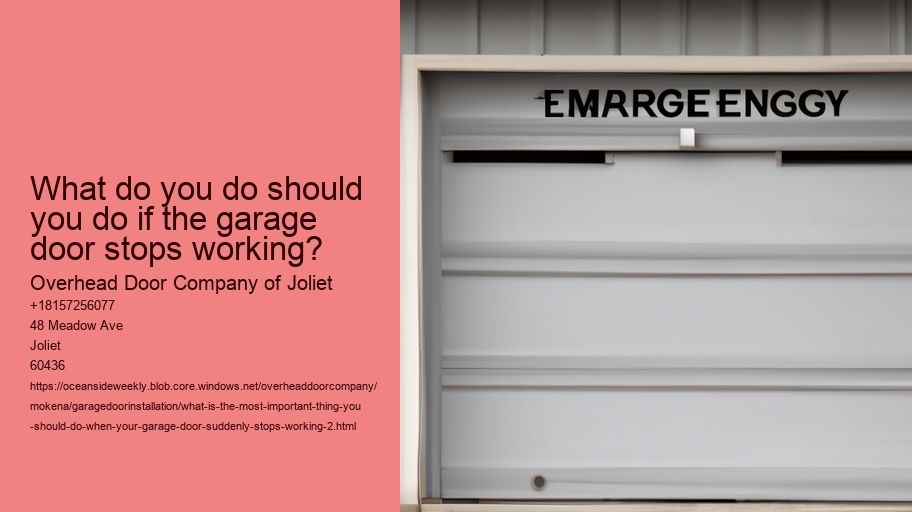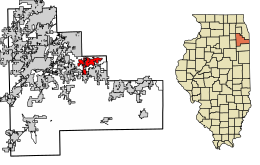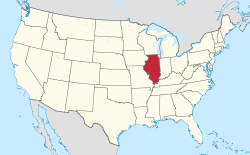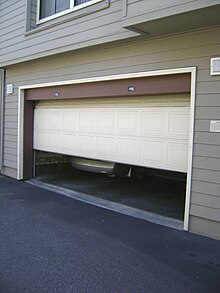What type of garage door Opener and Door Do You Have? .
It is important to know the kind of garage door and opener you own before you begin troubleshooting.
Garage doors are generally classified into a few categories according to their design and operation.The most popular doors are roll-up, sectional and tilt-up doors.Sectional doorways are constructed from panels that are joined by hinges, allowing the doors to bend when it opens and closes along vertical track.Roll-up doors, typically seen in commercial settings made of panels that fold up into coils.
Tilt-up doors on the contrary, are a single solid piece that can be tilted out and up as it opens.Belt drive garage door openers have a lower noise however they utilize a rubber band rather than chains. They're an excellent option for garages that are attached. Garage door openers with screw-drive utilize a threaded rod of steel for moving the garage door. This is the most effective combination of noise and cost.
Once you've identified your garage door and opener type then the next step is performing a simple checks for common issues.Ensure that power is connected to the opener examining the outlet as well as the breaker.Inspect the release cord for manual to make sure that it isn't pulled, which would disconnect the door from the opener.Examine the tracks of the door and rollers for any obstructions or damaged areas and clean any obstructions.
Lubricate moving parts as needed since a lack of lubrication can result in jamming, sticking or even squeezing.Resetting your opener will resolve any electronic issues. Check the manual for the opener you're using to determine the precise instructions. Certain openers can be reset by pressing the button, whereas others require to be disconnected from the unit and then re-plugged.
In some cases it could be more complicated for instance, a damaged spring or a motor that is worn out, which would require professional assistance.Springs are subject to significant tension and could be hazardous to repair without the appropriate tools and experience.
In conclusion, if your garage door suddenly stops functioning you'll be able to tell the
Be sure to look for any obstructions or debris
It's not easy and even confusing when your garage door stops working at a moment's notice, especially if utilize it regularly.
This simple, but efficient step can be used to pinpoint the problem, and restore the functionality of your garage.Even a minor obstruction could stop your garage door from functioning as it should.
Start by looking at the tracks on both the right and left sides of the door. Look for obvious obstructions or buildup. If you see something unusual, like a twig, or a rock stuck in the track. Get it removed with care.
Sometimes, the issue may not be immediately visible, so it's advisable to stretch your hand through the track and feel for any unseen obstacles.Ensure that the tracks are properly aligned in addition, as misalignment can also cause the door to become jammed.In the next step, examine the rollers as well as hinges.These parts should be able to move without resistance.If they are sticky or stuck, it might be a sign of accumulated dirt or rust.In such cases, cleaning and lubricating them will usually resolve the issue.Use a soft brush or cloth to wipe away any dirt and apply a lubricant that is suitable to ensure that they move freely.
It's also vital to look over the area surrounding the door itself.Sometimes items stored in garages can be moved or fall off, blocking the route of the door.Ensure that the space is clean and that there's nothing that is hindering the door's movement.
If, despite clearing any visible obstructions, the door does not work check the sensors.
The sensors in modern garage doors may malfunction if they are dirty or if they are not aligned correctly.By maintaining a clean path and clearing out obstructions, you'll avoid having to contact a professional solve a problem which is often easy to fix.
Examine the Remote Control and Wall Switch
When your garage door suddenly stops working this could result in an unintentional inconvenience that interrupts your normal routine.In these situations there is a natural feeling of the need to fix the problem quickly.One of the first and most effective steps you should take is to examine the remote control and wall switch.
The inspection of these components can help you save time and avoid costly errors. First, consider the remote control.This handheld device is your primary tool for operating the garage door without direct physical interaction.Over time, remote controls can experience issues such as drained batteries, signal interference, or even internal damage.Start by replacing the batteries with new ones.It might seem simple, but dead batteries are a common reason for a garage door not responding.If the problem persists after replacing the batteries, try reprogramming the remote according to the manufacturer's instructions.Additionally, ensure that the remote is within the recommended range and that there are no obstructions blocking the signal.
What is the most important thing You Should Do When Your Garage Door suddenly stops working? - basketball
- door
- boat
- basketball
The wall switch is an important component of the garage door's installation.
The wall switch is directly connected to the garage door opener, and often provides a more reliable means of operation.Inspect the switch for signs of physical damage, or wear.Sometimes loose wires or faulty connections can make the switch malfunction.If you feel comfortable doing this, make sure you access the switch's control panel and examine any damaged or disconnected wires.If there are any issues it is possible to call a professional electrician to safely address the problem.In some cases, both the wall switch could appear to be working, yet the door remains unresponsive.This may indicate an issue in the garage door opener unit or other parts like sensors or door tracks.However it is best to start by utilizing the wall switch and remote control is a logical first step.
It allows you to identify these common problems prior to moving on to more complicated troubleshooting strategies.The initial check will reduce time and give you confidence that you've taken the proper steps to identify the issue.
Test the door balance manually
When your garage door suddenly stops working, it can be both difficult as well as inconvenient.The garage door is an essential part of your home, providing security, protection from the elements, as well as easy access to your vehicle as well as storage space.
Testing the balance manually on the garage door could be crucial step to take should your door be malfunctioning. This simple but effective technique will allow you to identify any issues that might be present and also prevent any damage from occurring.The equilibrium of a garage door is critical to its proper functioning.A well-balanced door ensures that the opener won't have to perform more work than it needs to, thus reducing the likelihood of wear and tear on the motor as well as other parts.An imbalanced door, contrary to what you might think, can lead to more important issues over time, including misalignment, broken springs or a complete system failure.Therefore checking the door's balance is a vital check that will help determine if there is a problem with the door itself or with the opener mechanism.
To manually test the door balance, start by disconnecting the garage door opener.
The majority of garage doors come with a release mechanism that is located on the red cord or the handle.What is the most important thing You Should Do When Your Garage Door suddenly stops working? - boat
- Orland Park
- chain drive
- Sears
If you notice that your door is not properly balanced It is crucial to resolve the issue promptly.Door balance problems are typically related to the tension of the springs. It could be risky to adjust yourself because of the tension they're under.It is advised to seek assistance from a professional for adjusting the springs to ensure that the door is properly balanced correctly.Doing this does not just solve the immediate issue, but increases the longevity and durability of the garage door system.
In conclusion, manually testing the door's balance is a crucial initial step when your garage door suddenly stops functioning.
In addressing problems quickly and recognizing the importance of each in addressing the issue, you can make sure that your garage door will run seamlessly and safely in future.Take a look at the tracks and rollers.
This simple test will make it easier to save time and money if your garage door is not functioning.
The rollers and tracks are the key elements of the garage door's operation system.The tracks are the metallic rails that guide the door's movement when it opens and closes. The rollers are small wheels that are able to move along these tracks.
As time passes, these components may become dirty, misaligned or damaged, resulting in operational problems.Start by looking at the tracks for any obstructions.Dust, grime, and even tiny particles can collect within the tracks, which causes the rollers' to be hampered as they travel along the path.Cleaning the tracks using a damp cloth can often help to solve these issues.Make sure you dry them well afterward to avoid rust.
After that, you should check the alignment of the tracks.Tracks should be straight and parallel to other.If they look bent or out of alignment, the door can jam.You can gently press the misaligned parts back into position using the help of a rubber mallet.However should the damage is significant, it is advisable to contact a professional to re-align them in a safe way to ensure security and performance.
It is also important.Over time, the rollers may be damaged or worn out particularly if they're constructed from plastic.
Examine for evidence of wear and tear, like cracks or chips.If the rollers are worn, think about changing them out with brand new ones.Metal rollers with ball bearings tend to offer greater durability and more smooth operation.Utilizing silicone-based lubricants may decrease friction and wear. Make sure to lubricate the hinges and springs in order to ensure your garage door is functioning properly.
If you ensure that these parts are in good alignment and properly lubricated It is possible to bring back the garage door's full function.
Regularly inspecting and maintaining these components will assist in preventing any future malfunctions. This will help prolong the life of the garage system.Look for obvious damage or wear
It can be frustrating and inconvenient when your garage door stops operating abruptly, especially if you're heading home or trying to secure the house for the night.
Garage doors are an intricate system composed of numerous parts, such as springs, cables, rollers, and tracks every one of which plays an important role in the seamless operation.Over time, these components will wear out from regular usage and exposure to environmental elements.
Through a thorough visual exam, you can spot any obvious signs of damage that could be causing the door to malfunction.Start by inspecting springs. They are the ones responsible for lifting and lower the door. Check for indications of wear or rust. A broken or worn out spring could render the door unusable, which is why it is essential to address this issue as soon as possible. The next step is to check the cables for fraying or broken strands.
The door is a different area that needs the attention of a professional. Be aware of visible cracks, warpings, or bends.
Additionally, ensure that the door's sensors are clear and aligned, because misalignment or dirt could affect their functionality and result in the door not working.While a thorough inspection of your property can provide valuable insights but it is crucial to keep in mind that certain issues might not be immediately apparent.If you do not find any obvious signs of damage or wear, it might be necessary to seek out a professional to pinpoint and address the problem.However, by conducting an initial examination, you are able to find and correct minor problems before they become important and costly repairs.
If you're confronted with a malfunctioning garage door, searching for visible damage or wear is the most important first step.This method not only assists in identifying the problem quickly but also empowers you to make the appropriate action to restore the door to normal operation.
You can extend the lifespan of your garage door by being proactive.Examine the Springs and Cables
When your garage door suddenly stops functioning is both painful as well as inconvenient.One of the most important actions you can take in this scenario is to assess the springs as well as cables.These components are integral to the operation of your garage door and issues related to them are typically the culprits behind a malfunctioning door.
Springs play an essential part in the operation of the garage door through helping to balance the door's weight.When the door is in motion, the springs take on the bulk of the load, allowing the door to open and close smoothly.There are typically two types of springs: torsion springs as well as extension springs.Torsion springs are installed above the garage door and twist to store energy, while extension springs are located to both sides of the door and stretch to give the needed force.
Over time the springs be damaged, worn out, or lose tension, which can lead to problems with operation.The cables may be damaged by wear and tear. They could fray or snap when pressure is applied.
If you are unsure whether the cables or springs require to be adjusted or not, visually examine them. Look for signs of wear and rust.
It is essential to be safe while dealing with garage door parts.
Cables and springs are under pressure and could result in serious injury if mishandled.If you're not a pro at garage door repairs, it's wise to seek out an expert technician.They have the tools and expertise to safely repair or replace these components, ensuring your garage door functions correctly and safely.What is the most important thing You Should Do When Your Garage Door suddenly stops working? - boat
- floor
- diameter
- relay
In conclusion, when your garage door suddenly stops working, assessing the springs and cables is a key step in diagnosing the problem.Understanding their role and potential issues can help you determine whether a simple adjustment is needed or if professional intervention is required.Taking prompt action not only restores functionality but also ensures the safety and longevity of your garage door system.
Think about calling a professional technician
Your garage door may suddenly stop working, causing you to lose time. It could cause your home to be at risk.
While it might be tempting to pick up the tools and attempt doing it yourself, the most prudent method is to contact an experienced technician.This decision will not only guarantee your safety, but also provides a more effective and lasting solution to the problem.Garage doors are complex systems composed of various components such as springs, cables, tracks, and electronic parts.Each of these elements plays a crucial role in the door's operation, and a malfunction in any part can cause the entire system to fail.Without proper knowledge and experience, attempting to fix these issues can be dangerous.For instance, garage door springs are under high tension and can cause severe injury if handled improperly.Professional technicians are trained to deal with these risks safely, using the right tools and techniques to handle repairs.
Furthermore, a skilled technician brings expertise and experience that a layperson does not possess.
They can quickly diagnose the issue and identify whether it's a minor problem, like a misaligned track, or something more serious, like a broken spring.This expertise not only saves you time but also prevents the potential for further damage that can occur with incorrect handling.Professionals also have access to high-quality parts and can ensure that replacements match the specifications of your existing garage door system, leading to better functionality and longevity.Furthermore the hiring of a professional could save you money in the long run.While a DIY strategy may appear less costly initially, the potential for mistakes is high. This can result in greater and more expensive repairs in the future.A professional technician will get the job done correctly the first time, minimizing the risk of repeating issues.
Many technicians offer warranties on their services. This gives you assurance that when something goes wrong, your problem is covered.Then, contacting a professional could save you a lot of time and hassle.Trying to grasp the complexities of garage door mechanics, acquire the proper tools, and execute repairs can be time-consuming and take days.In the opposite, a professional can usually resolve the issue quickly, allowing you to go back to normal without unnecessary delays.
In the end, even though the desire to repair your garage door on your own may be strong, calling an expert technician is the safest, most efficient, and in the end, the best option.Their know-how and access to high-quality parts, and their ability to make quick and precise repair work will make sure that your garage door will be up and running again and will protect your property and


















